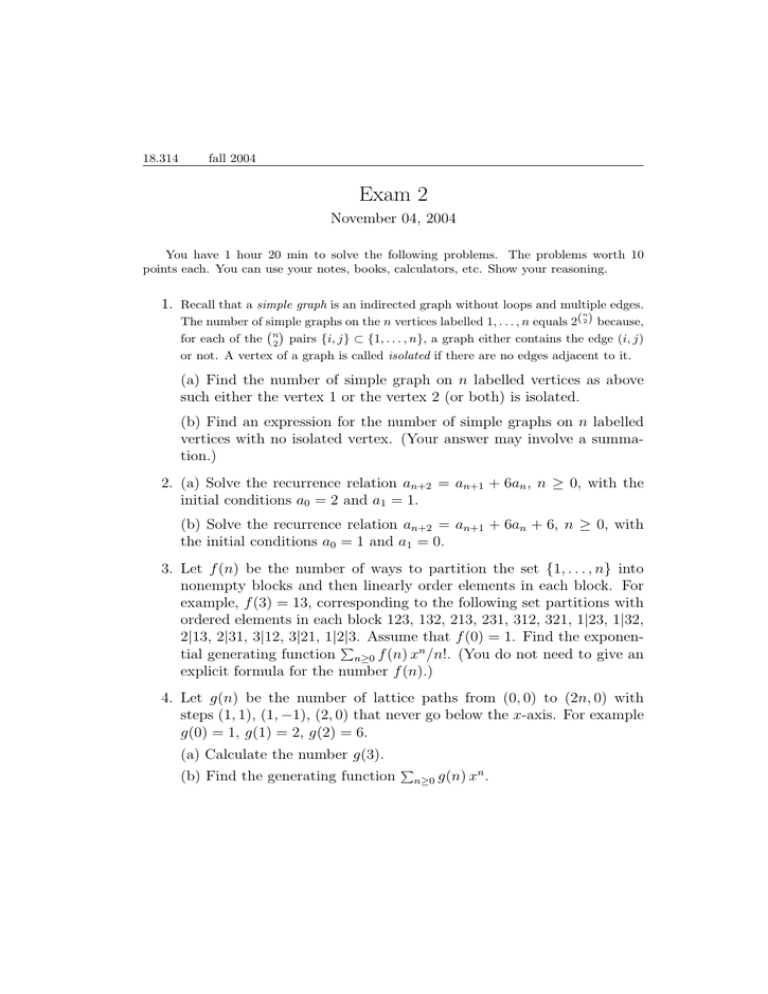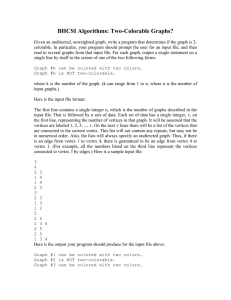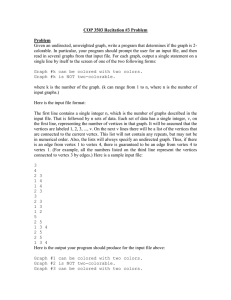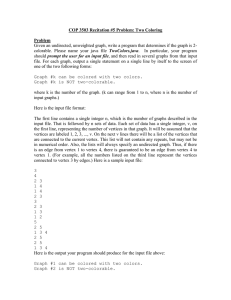Exam 2 November 04, 2004
advertisement

18.314
fall 2004
Exam 2
November 04, 2004
You have 1 hour 20 min to solve the following problems. The problems worth 10
points each. You can use your notes, books, calculators, etc. Show your reasoning.
1. Recall that a simple graph is an indirected graph without loops and multiple edges.
n
The number of simple graphs on the n vertices labelled 1, . . . , n equals 2( 2 ) because,
for each of the n2 pairs {i, j} ⊂ {1, . . . , n}, a graph either contains the edge (i, j)
or not. A vertex of a graph is called isolated if there are no edges adjacent to it.
(a) Find the number of simple graph on n labelled vertices as above
such either the vertex 1 or the vertex 2 (or both) is isolated.
(b) Find an expression for the number of simple graphs on n labelled
vertices with no isolated vertex. (Your answer may involve a summation.)
2. (a) Solve the recurrence relation an+2 = an+1 + 6an , n ≥ 0, with the
initial conditions a0 = 2 and a1 = 1.
(b) Solve the recurrence relation an+2 = an+1 + 6an + 6, n ≥ 0, with
the initial conditions a0 = 1 and a1 = 0.
3. Let f (n) be the number of ways to partition the set {1, . . . , n} into
nonempty blocks and then linearly order elements in each block. For
example, f (3) = 13, corresponding to the following set partitions with
ordered elements in each block 123, 132, 213, 231, 312, 321, 1|23, 1|32,
2|13, 2|31, 3|12, 3|21, 1|2|3. Assume that f (0) = 1. Find the exponenP
tial generating function n≥0 f (n) xn /n!. (You do not need to give an
explicit formula for the number f (n).)
4. Let g(n) be the number of lattice paths from (0, 0) to (2n, 0) with
steps (1, 1), (1, −1), (2, 0) that never go below the x-axis. For example
g(0) = 1, g(1) = 2, g(2) = 6.
(a) Calculate the number g(3).
(b) Find the generating function
P
n≥0
g(n) xn .











